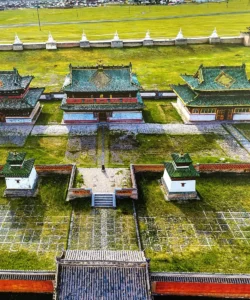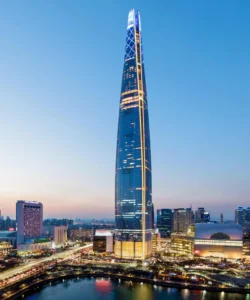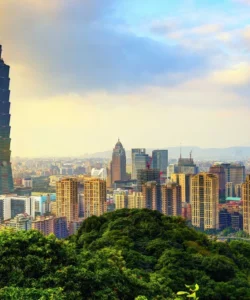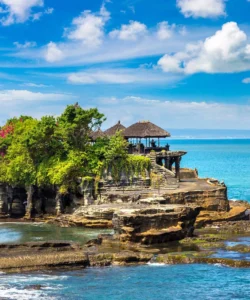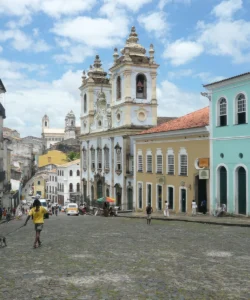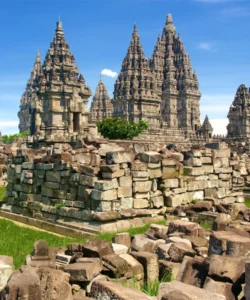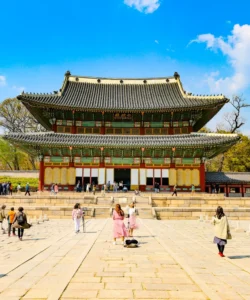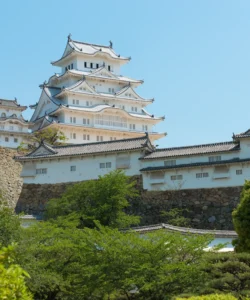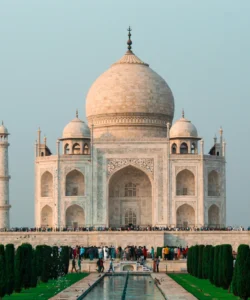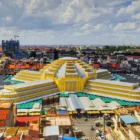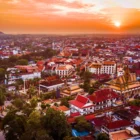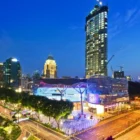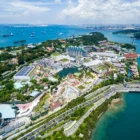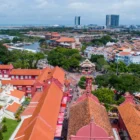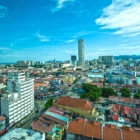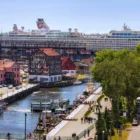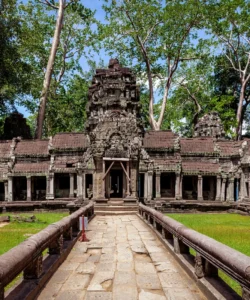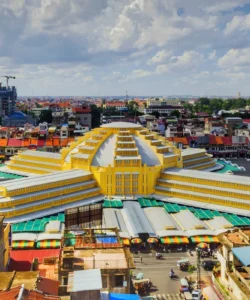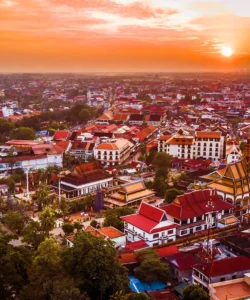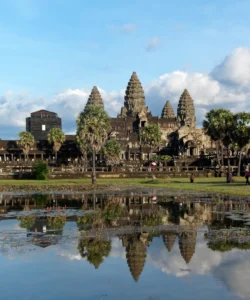Prepare to discover The Ruins of St. Paul’s, a magnificent and iconic “Wonder” that stands as a powerful symbol of Macau’s rich history and unique East-meets-West heritage.
Name: Ruins of St. Paul’s (大三巴牌坊 – Dai San Ba Pai Fang, or “Archway of Saint Paul’s”)
Address: Senado Square, Macau SAR, China
(It’s located at the top of a hill, accessible from Senado Square via a series of pedestrian streets and steps.)
How to get there:
The Ruins of St. Paul’s are centrally located in Macau’s historic center, making them very accessible by various means.
- By Foot: This is the most common and recommended way, as the Ruins are part of the UNESCO-listed Historic Centre of Macau, a pedestrian-friendly area. From Senado Square, follow the main pedestrian street (Rua de São Paulo) uphill past shops and food stalls. It’s about a 10-15 minute walk.
- By Bus: Numerous public bus routes stop near Senado Square or in the vicinity. Look for stops like “Almeida Ribeiro / Senado Square” (亞美打利庇盧大馬路 / 營地大街) or “Rua de São Paulo.” From these stops, it’s a short walk uphill.
- By Taxi: Taxis can drop you off near Senado Square, from where you’ll walk the rest of the way up.
- From Macau Ferry Terminal or Border Gate: Take a public bus or a taxi to Senado Square. Many casino shuttle buses also go to Senado Square, from which it’s a walk.
Landscape and Architecture:
The “landscape and architecture” of the Ruins of St. Paul’s are uniquely characterized by a blend of Baroque, Mannerist, and traditional Chinese influences, set against an urban backdrop.
- The Façade: This is the iconic “Wonder” itself. It’s the elaborate, intricately carved stone façade of what was originally the Church of Mater Dei, part of St. Paul’s College. The church and college were built by the Jesuits in the early 17th century but were largely destroyed by fire in 1835, leaving only this magnificent stone frontispiece standing.
- Baroque and Mannerist Style: The façade is primarily Baroque, but with Mannerist elements. Its design draws heavily from European churches of the time.
- Fusion of Cultures: What makes it truly unique is the integration of Asian themes and motifs within the largely European design. You’ll find:
- Chinese guardian lions alongside Portuguese symbols.
- Carvings of a dragon and a traditional Japanese chrysanthemum next to Christian saints and biblical scenes.
- Chinese characters alongside Latin inscriptions.
- Statues of the Virgin Mary, various saints, and symbols of the Passion of Christ, all sculpted by Japanese Christian artisans.
- Steps and Plaza: A grand flight of 66 stone steps leads up to the façade, creating a dramatic approach and offering a popular vantage point for photos. A small plaza in front of the façade allows visitors to admire its details.
- Museum of Sacred Art and Crypt: Behind the façade, a museum and crypt house sacred art, liturgical objects, and the relics of Japanese and Vietnamese martyrs who were once interred in the church.
- Mount Fortress: Adjacent to the Ruins is the historic Mount Fortress (Fortaleza do Monte), built by the Jesuits in the early 17th century. While not part of the Ruins themselves, it offers panoramic views of Macau and underscores the historical context of the church.
- Surrounding Urban Fabric: The Ruins are nestled within a vibrant urban environment, with traditional Portuguese-style paved streets, historic buildings, and bustling shops leading up to them, showcasing Macau’s colonial past.
What makes it famous:
The Ruins of St. Paul’s are famous for several compelling reasons:
- Symbol of Macau’s Heritage: They are the most recognizable landmark of Macau and a powerful symbol of its unique fusion of Chinese and Portuguese cultures, Christian faith, and historical significance as a major trading post.
- Architectural Masterpiece: Despite being a ruin, the surviving façade is an extraordinary example of Baroque architecture with unique Asian influences, showcasing incredible craftsmanship and artistic detail.
- UNESCO World Heritage Site: It’s a central component of the “Historic Centre of Macau,” designated a UNESCO World Heritage Site in 2005, recognizing its cultural and historical significance.
- Photogenic Icon: Its dramatic silhouette against the sky, especially when viewed from the grand steps, makes it an incredibly popular and iconic spot for photography.
- Historical Significance: It represents the grandeur of Macau’s past as a center for Jesuit missionary activity in Asia and its role in early global cultural exchange.
- Resilience: The fact that the façade alone survived the devastating fire of 1835 gives it a poignant and enduring quality.
Differences from some other wonders:
- “Glorious Ruin”: Unlike a fully intact building (like the Colosseum, which is also a ruin but more of an arena), the Ruins of St. Paul’s is a magnificent, yet solitary, façade. Its “wonder” lies in its partial survival and the dramatic story of what was lost, rather than the complete structure itself.
- Cultural Fusion in Architecture: While many wonders might have cultural influences, St. Paul’s stands out for its explicit and rare blend of European Baroque/Mannerist styles with distinct Asian (Chinese and Japanese) motifs within its single architectural form. This visible synthesis is truly unique.
- Symbolic, Not Functional: It is no longer a functioning church but a monumental symbol. Its power lies in its historical narrative and aesthetic appeal, unlike active places of worship or grand palaces.
- Urban Integration: It’s tightly integrated into the urban fabric of a bustling city, approached through lively pedestrian streets filled with shops and eateries, offering a more immediate, “living” historical experience compared to some isolated archaeological sites.
- Focus on a Facade: The entire fame and impact rest on a single, albeit elaborate, two-dimensional façade, rather than a three-dimensional building, a natural landscape, or a vast complex.


